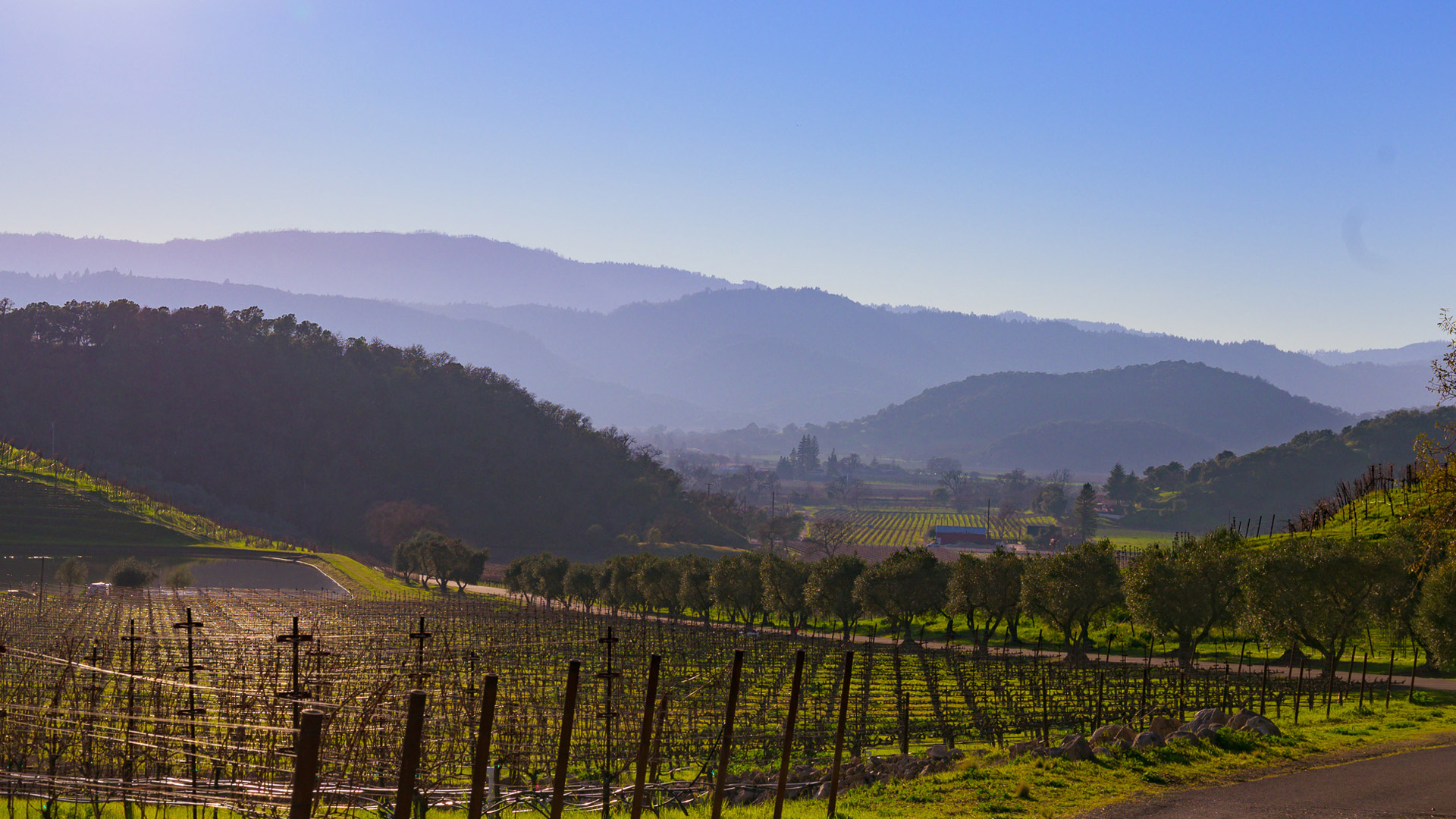Calistoga
Calistoga Wines to Know
One can't help but notice the history in Calistoga. This is the one place in Napa Valley that treasures nostalgia. And, for wines, it means there's a lot of unique old vines!
For example, you'll find varieties like Zinfandel, Petite Sirah and Charbono (A rare one indeed! The same as Argentina's "Bonarda") planted amongst the Cabernet Sauvignon. The odd, old vines are an exciting feature in this slice of Napa Valley.
As far as flavors are concerned, think "ripe" and "dusty." You can practically taste the minerality from the area's volcanic-heavy soils.
Looking over Kenefick Ranch Vineyards in Calistoga – the narrowest part of Napa Valley.
Notable Vineyards (and Wineries) in Calistoga
If there's one winery that everyone gushes over in Calistoga, it's Chateau Montelena Winery. This fairytail-like estate sits tucked away on a knoll. It's most famous for its 1973 Chardonnay, which was THE Chardonnay that competed–and won–the Judgement of Paris tasting in 1976.
An exclusive vineyard in Calistoga (as in not easy–or near impossible–to visit) but worth knowing about is Eisele Vineyard. This vineyard was first planted in the 1880s and has been known for its Cabernet since the 1970s.
The vineyard has shown up in many famous wines throughout the years, including wines from Conn Creek, Joseph Phelps "Insignia," and now Araujo who manages the estate biodynamically. Perhaps one of the more interesting wines from Eisele is the Syrah.
But honestly, this is just the tip of the iceberg. There are many historic, fascinating stories in Calistoga that you need to uncover and then go taste. Especially, if you dig history and dirt.
Calistoga Terroir
Daytime temperatures in Calistoga indeed get hot – upwards of 100°F (38°C) during the day. However, there is a break in the hills to the west called the Chalk Hill gap that lets cool air in at night.
The breeze makes the temperature shift between day and night as high as 50 degrees Fahrenheit (big!). This diurnal shift helps vines rest at night to preserve acidity in grapes. The result is ripe-tasting wines that aren't flabby.
Another feature is the volcanic soils. This part of the valley has the most volcanic origin soils. For fans of mineral-driven wines with tension between fruit and earth – this is your hotspot.
Calistoga AVA Facts
- The Calistoga AVA was finally established in January of 2010.
- Calistoga AVA has the most extreme diurnal swing of all the Napa Valley AVAs.
- Calistoga has vineyards as high as 1200 feet above sea-level.
- Over 50% of the grapes in Calistoga are Cabernet Sauvignon.
- The total AVA area is 12,713 acres with approximately 625 acres of planted vineyards.
- Soil Types: Volcanic stony or cobbly loam, and heavier clay-silt soils.























